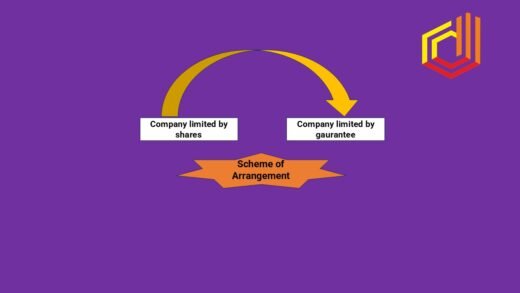 Hon’ble Delhi High Court in the matter of Ambuja Cements[1], passes an important judgement regarding the payment of stamp duty on merger scheme as conveyance in Delhi. Details of same is as under:
Hon’ble Delhi High Court in the matter of Ambuja Cements[1], passes an important judgement regarding the payment of stamp duty on merger scheme as conveyance in Delhi. Details of same is as under:
The factual background of the case is that Holcim (India) Private Limited (hereinafter referred to as “the petitioner”) is a private limited company incorporated under the Companies Act, 1956 and is a wholly owned subsidiary of Holderind Investments Ltd., Mauritius (hereinafter referred to as “Holderind”). Ambuja Cements India Private Limited (hereinafter referred to as “ACIPL”) was incorporated under the Companies Act was an investment company and did not undertake any business. ACIPL was a 100% subsidiary of Holderind which held 55% shares of ACIPL directly and the remaining 45% shares were held by the petitioner. Assets of ACIPL comprised of its shareholding in ACC Limited (hereinafter referred to as “ACC”) and Ambuja Cements Limited (hereinafter referred to as “ACL”) in dematerialized form
Upon approval of merger under sections 391 to 394 of the Companies Act, 1956, ACIPL was dissolved without winding up and shares of ACC and ACL were transferred to Holderind as a part of merger.
The requisite stamp duty as per the Indian Stamp Act, 1899 (hereinafter referred to as “the Act”) as applicable to the State of Haryana was also affixed to the share certificate at Haryana.
The Collector of Stamps, Delhi (“the respondent”)issued a show cause notice (“SCN”) for failing to pay stamp duty on the merger under conveyance entry. Reference was made on the judgement passed by Hon’ble Delhi High Court in case of Delhi Towers Ltd[2] for issuing such SCN.
In response to the SCN, submission was made as under:
- the petitioner had not submitted any application to the respondent and was under no obligation to submit any documents to the respondent.
- Both the transferor and transferee companies were wholly owned subsidiaries of a common parent company. The merger had taken place between two subsidiary companies of each of which not less than 90 per cent of the share capital was in the beneficial ownership of a common parent company and the said transaction was not exigible to stamp duty by virtue of Notification no. 13 dated 25.12.1937 issued by the Central Government (hereinafter referred to as “the 1937 Notification”) which was also mentioned in the Delhi Towers Ltd.
The respondent disregarded the 1937 Notification despite relying upon Delhi Towers Ltd. The respondent passed the impugned order holding that as per Article 23 of Schedule IA of the Act, the petitioner was liable to pay stamp duty on the merger order @ 3% of the total value of shareholding in ACC and ACL besides imposing penalty upon the petitioner. The respondent also held that the petitioner was liable to pay stamp duty on the issue of 353,84,08,335 equity shares pursuant to the merger as per Article 19 of Schedule IA of the Act.
The petitioner, being aggrieved, filed the petition and challenged impugned order, contesting that
- in the absence of transfer of immovable property, stamp duty can not be levied under the ‘conveyance’ entry as per section 2(10) of the Act; and
- that the merger order was clearly covered under the 1937 Notification as Holderind held more than 90% of the share capital of ACIPL and the petitioner which are both 100% subsidiaries of Holderind.
The respondent argued as under:
- the 1937 Notification is not applicable as it was repealed when Schedule IA of the Stamp Act was extended to Delhi.
- the merger is considered as a “conveyance” since it involved transfer of assets and liabilities.
The Delhi High Court upheld the demand for stamp duty emphasizing that a merger order, being an instrument of property transfer between two entities, is liable under the Stamp Act, and existing exemptions or notifications must align with legislative amendments and judicial precedents.
Court concluded on several key points as under:
- The court determined that the merger order qualifies as a “conveyance” under Section 2(10) of the Indian Stamp Act, 1899. As such, it is subject to stamp duty under Article 23 of Schedule IA of the Act. This conclusion aligns with prior judgments, such as Delhi Towers Ltd. v. GNCT of Delhi.
- The court examined both sides and held that the notification’s applicability depends on legislative amendments and specific legal interpretations.
- the court emphasized that the type of property (movable or immovable) does not exclude the merger from being classified as a conveyance for stamp duty purposes.
- the court ruled that the merger order, as an instrument, does not automatically fall under this exemption under section 8A of the Indian Stamp Act.
- Court ruled that the respondent, while demanding the documents and imposing duties, acted within the scope of his powers under Section 47A(3) of the Act.
[1] Ambuja Cement Limited Vs Collector of Stamps, Delhi [W.P.(C) 5638/2014 & CM APPL. 13964/2014]
[2] Delhi Towers Ltd. V G.N.C.T. of Delhi, [2009 SCC OnLine Del 3959]



